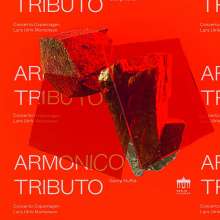Die fünf Orchestersonaten hatte Georg Muffat bereits während seines Studienaufenthalts in Rom komponiert. Er nutzte sie dann 1682 als harmonische Huldigung zur Feier der Gründung Salzburgs 1100 Jahre früher. Dabei sind diese Sonaten sowohl sehr geeignete Beispiele für den gemischten Stil, den Muffat gekonnt einsetzen konnte, da er sowohl den französischen als auch den italienischen Stil vor Ort kennengelernt hatte. Und außerdem kannte er aus seiner Heimat in Mitteleuropa den Stylus Phantasticus. Daneben geben die zahlreichen von ihm überlieferten Hinweise zu Besetzung und Ausführung hilfreiche Angaben zur Interpretation.
Die Interpreten tragen dem Rechnung, indem sie verschiedene Besetzungen für diese fünf Werke verwenden und so eine weitere Differenzierung erreichen. Im Übrigen kennzeichnet sich ihr Vortrag durch stimmungsreiche, mit viel Gespür für den Fluss der Musik angelegte Interpretationen, die sich neben einer kultivierten Artikulation auch feiner Differenzierung nicht scheuen. So lassen sich diese Werke in angenehmen Darstellungen hören.
Georg Muffat had already composed the five orchestral sonatas during his study stay in Rome. He then used them in 1682 as a harmonic homage to celebrate the founding of Salzburg 1100 years earlier. In this context, these sonatas are both very suitable examples of the mixed style that Muffat was able to use skillfully, since he had become familiar with both the French and Italian styles. And besides, he knew the stylus phantasticus from his home in Central Europe. In addition, the numerous notes on scoring and execution provide helpful information for the interpretation.
The performers take this into account by using different instrumentations for these five works, thus achieving further differentiation. For the rest, their performance is characterized by atmospheric interpretations with a great sense for the flow of the music, which, in addition to a refined articulation, do not shy away from fine differentiation. Thus these works can be heard in pleasing performances.


















